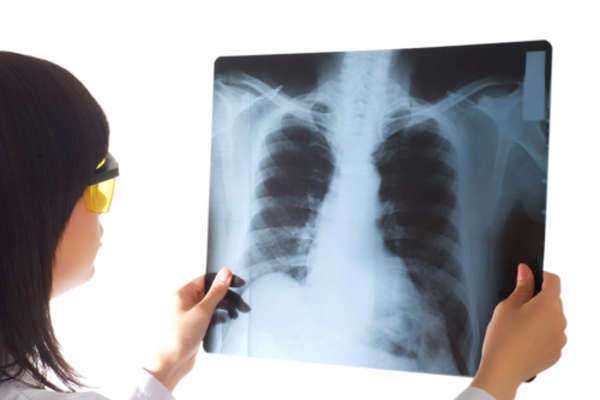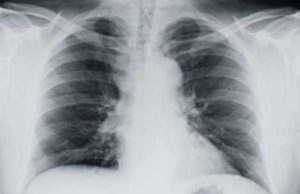
Brief Background on Mesothelioma Cancer:
Mesothelioma is an extremely rare and serious cancer that develops in the mesothelium—lining of tissue that serves as a protective barrier for a number of internal organs in the body. Mesothelioma cancer typically develops from chronic asbestos inhalation; most sufferers of mesothelioma have a long history dealing–whether through employment or private–with asbestos fibers and/or filaments.
Mesothelioma comes in a variety of forms; however, the most common tumors will develop in the outer lining of the lungs and the internal cavity of the chest. Mesothelioma symptoms include: shortness of breath (results from a build-up of fluid between the lungs and the chest wall), incessant cough and unexpected or severe weight loss.
One of the reasons why mesothelioma sufferers have such a poor prognosis is because the disease is nearly impossible to predict during its origin or infancy stages. Mesothelioma symptoms lay dormant for years; the cancer is slow developing and does not become evident until 15-20 years following the initial infection. Because of this slow-developing nature, the bulk of mesothelioma patients will not even know they have the disease until it reaches stage III or IV. At this time, the disease is deemed inoperable.
Similar to other cancers, mesothelioma is classified by stage. When mesothelioma progresses the outlook becomes more drastic for the patient. The insidious nature of mesothelioma works in conjunction with its inconspicuousness to create a fatal disease—most mesothelioma patients will die from the disease within a year of being diagnosed.
Because the bulk of mesothelioma patients do not realize they have the condition until the cancer has already spread or metastasized, treatment options are largely palliative in nature. Advanced mesothelioma cancer is regarded as too dangerous to perform surgery or chemotherapy treatments. As a result, most mesothelioma patients will opt for fairly routine or palliative procedures to mitigate their symptoms and improve their overall quality of life.
One of the more common forms of mesothelioma treatment is radiation.
Mesothelioma Radiation:
Radiation therapy is a traditional form of cancer treatment. For mesothelioma patients, radiation therapy is used in conjunction with chemotherapy or surgery to secure the most efficient results. The goal of radiation therapy is to ultimately remove as much of the cancer as possible. Moreover, radiation therapy may be employed to relieve some of the symptoms associated with mesothelioma—radiation therapy may be employed as a curative or palliative treatment option.
Types of Radiation Therapy: External Beam Radiation
External beam radiation employs a radiation source to pinpoint tumors and eliminate or inhibit the growth of malignant cells in said area. External beam radiation therapy is regarded as the “original” form of radiation treatment.
External beam radiation therapy is administered by a large machine that delivers an external source of radiation to the affected region (where the tumor is located). The machine moves around the body but never touches it. As a result, radiation therapy—particularly external beam radiation—is a non-intrusive and painless mesothelioma treatment option that may be rendered at an outpatient facility.
Similar to all forms of radiation, eternal beam radiation aims to kill cancerous kills and stop them from proliferating. Often times; however, the extreme dosage of radiation will reach areas outside of the tumor. Therefore, many healthy cells may be affected, or in some cases, destroyed entirely.
In a general sense, external beam radiation to fight mesothelioma is implemented five times per week for two to twelve weeks. The recommended length of therapy and dosage will depend on several factors including the type of mesothelioma cancer, its location, the size of the tumors, the overall health of the patient and the other treatment options simultaneously being administered. A single external beam radiation session will last anywhere from 10 to 30 minutes.
When a patient undergoes external beam radiation, the individual will lie flat on a table. Certain parts of his/her body will be exposed to the radiation. During the course of the treatment, a technician responsible for controlling the machine will be in an adjacent room. The patient will hear clicking and other noises; these noises are normal and indicate the delivery of radiation to the body. If the patient is concerned, he or she is free to communicate with the technician via an intercom system.
Mesothelioma Treatment Options: Brachytherapy
Brachytherapy is an internal radiation source that is implanted in the patient’s body. This form of radiation treatment has not exhibited great efficacy in mesothelioma treatment.
Mesothelioma Brachytherapy—also referred to as internal radiation therapy—is a targeted form of mesothelioma treatment that pumps high doses of radiation directly to the tumor. This “short distance” treatment option is fairly new but has shown promise in its ability to fight a number of cancers.
Brachytherapy involves the implantation of microscopic radioactive rods or seeds in or around the tumor. These rods or seeds secrete highly-concentrated doses of radiation to the tumor and its surrounding area. Because delivery is intended to be highly precise, Brachytherapy affects fewer healthy cells than other forms of radiation therapy.
There are two types of Brachytherapy radiation therapy: permanent and temporary. The latter involves an implantation of seeds for a short pre-designated period of time after which the seeds are removed. In contrast, permanent Brachytherapy implants an ever-lasting seed in the body. These seeds will; however, cease to emit radiation within 3 to 12 months following implantation.
Brachytherapy is an outpatient procedure that is delivered in a shielded room. Brachytherapy does not require a hospital stay, unless high doses of radioactive treatment are administered. In all Brachytherapy cases, the rods or seeds are implemented by metal tubes or catheters.
When Brachytherapy is completed, the patient may immediately return home; however, he/she is typically advised to avoid contact with small children or pregnant women, who are prone to effects of radiation.
Mesothelioma Treatment Options and Radiation Therapy Side Effects
The most common side effects of mesothelioma radiation therapy include: skin irritations, fatigue, oral cavity inflammation and dry mouth.
In general, mesothelioma radiation therapy carries minimal side effects especially when compared to other mesothelioma treatment options, such as chemotherapy. Other common side effects of mesothelioma radiation therapy include the following:
Severe Fatigue: Mesothelioma radiation therapy zaps the energy from those who undergo the treatment. Many individuals report extreme levels of fatigue during the course of the treatment. Moreover, a number of patients report that the fatigue is perpetual and long-lasting—it supposedly remains present for months or even years once treatment is complete.
Skin Irritations: Dryness, redness, darkening and peeling of the skin are commonly observed side effects of mesothelioma radiation therapy. Burning of the skin may also take place, although this is less common than the aforementioned skin problems.
Mouth Problems: The majority of patients undergoing mesothelioma radiation therapy report severe inflammation or dry mouth of the oral cavity as well as severe fluctuations in taste. These side effects must be reported to a medical professional immediately if they interfere with eating or swallowing.



























